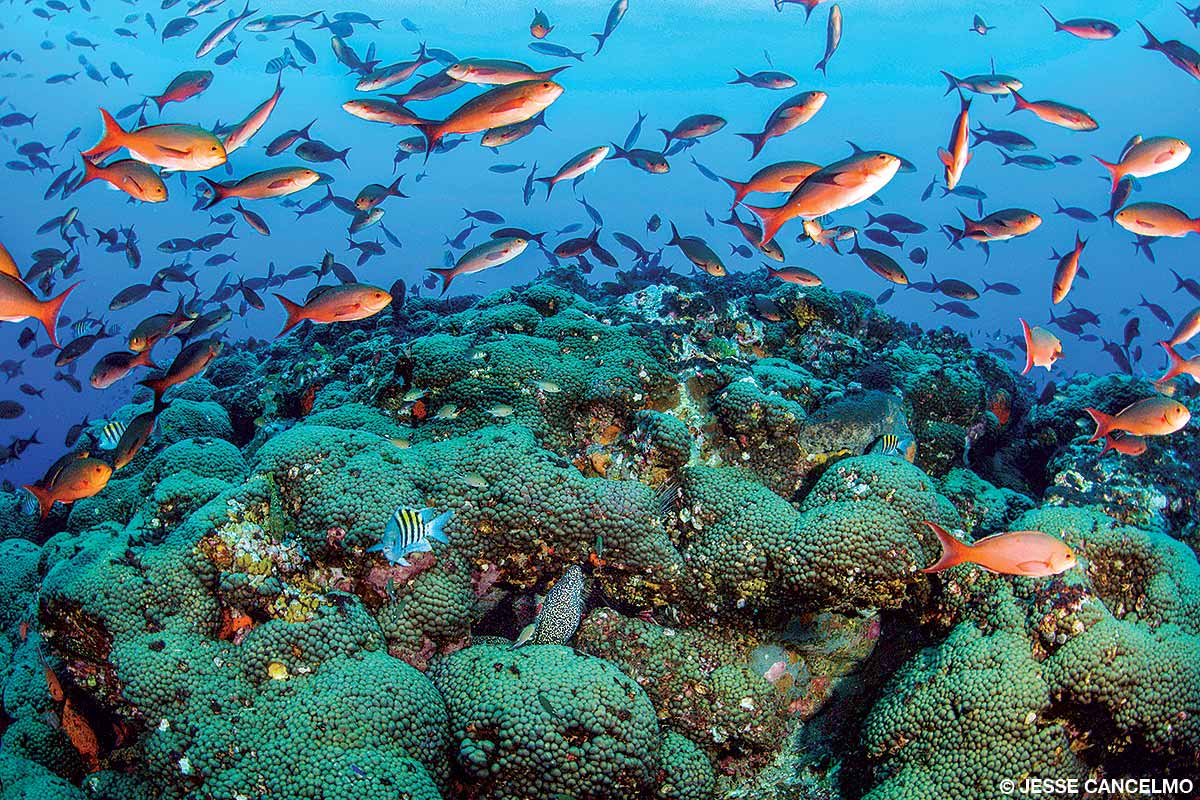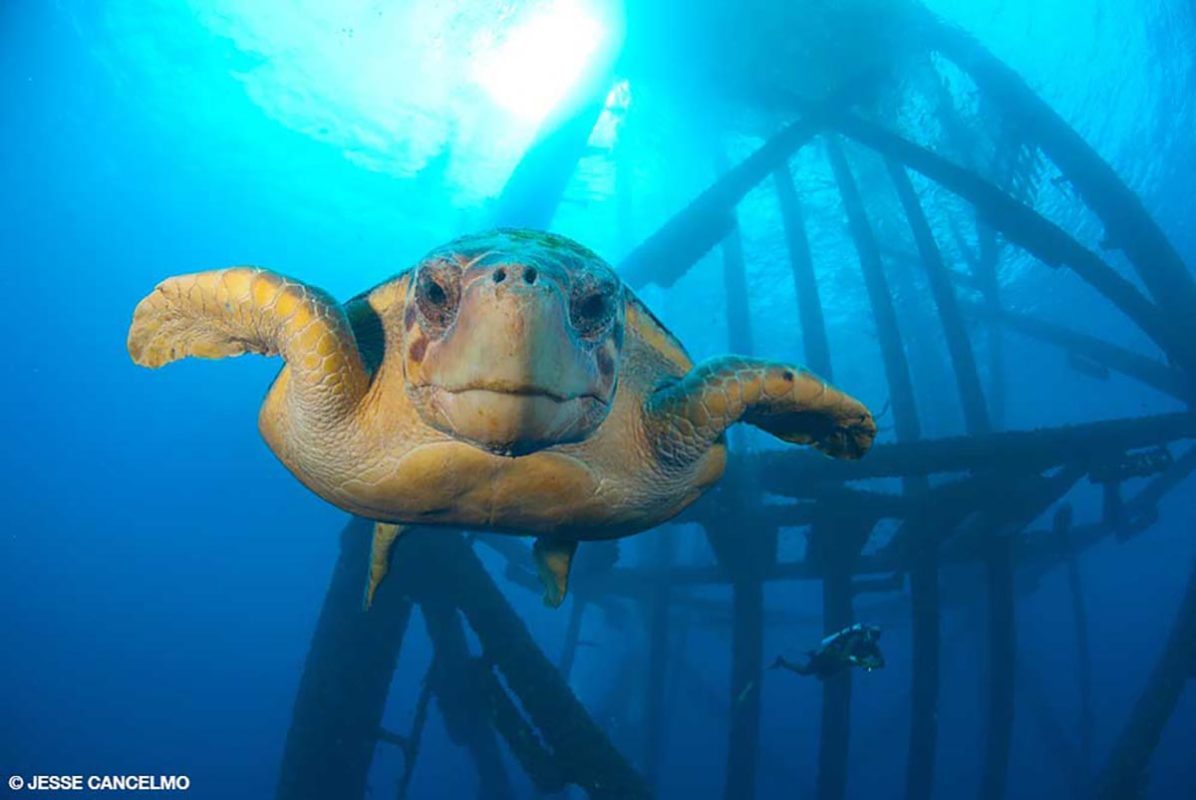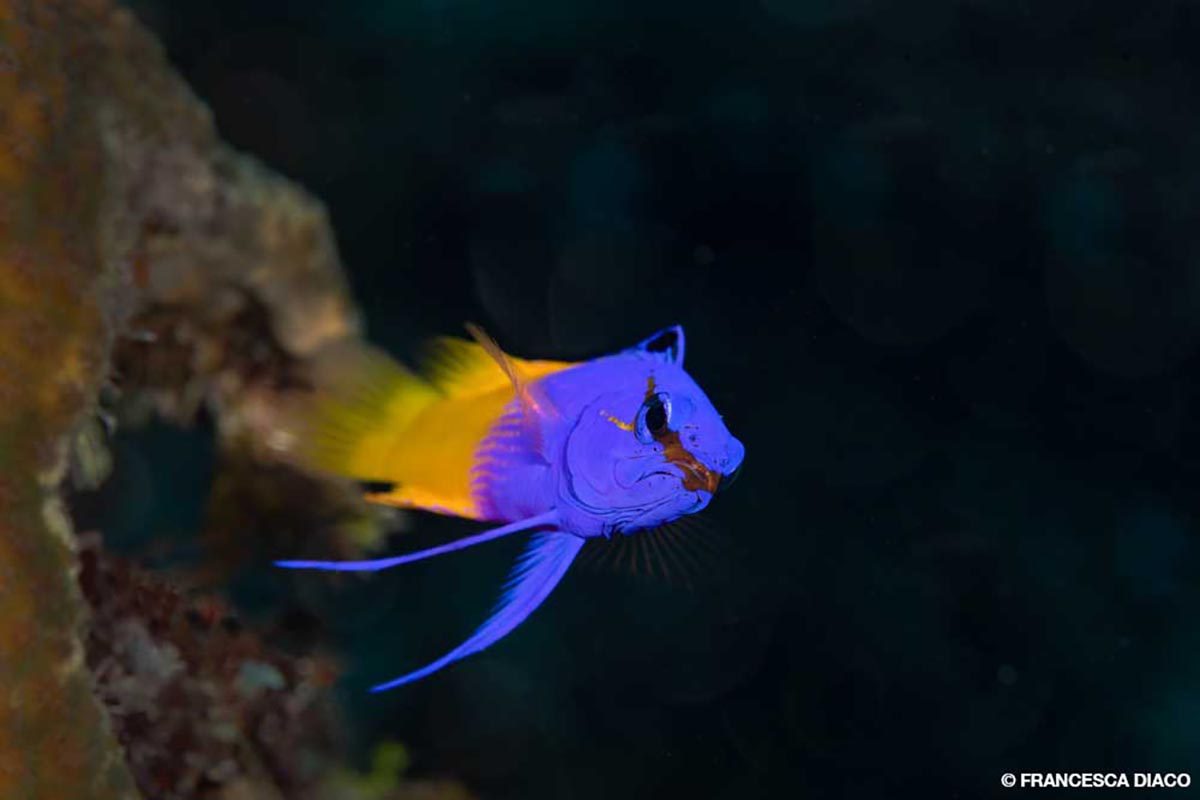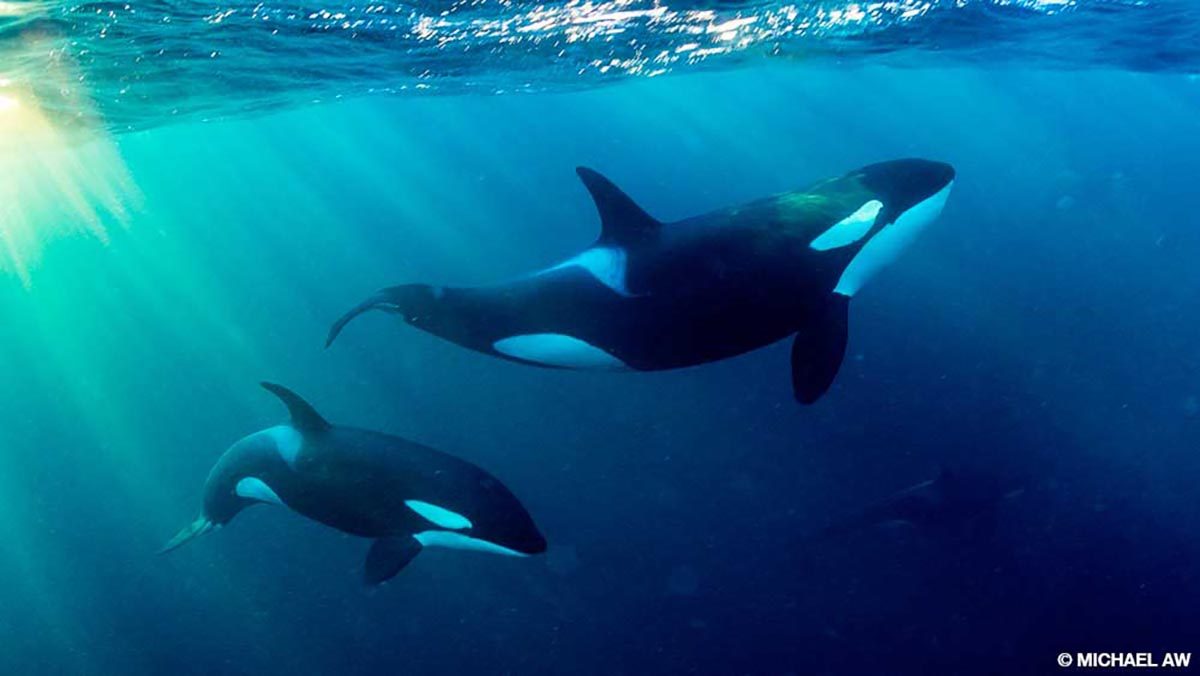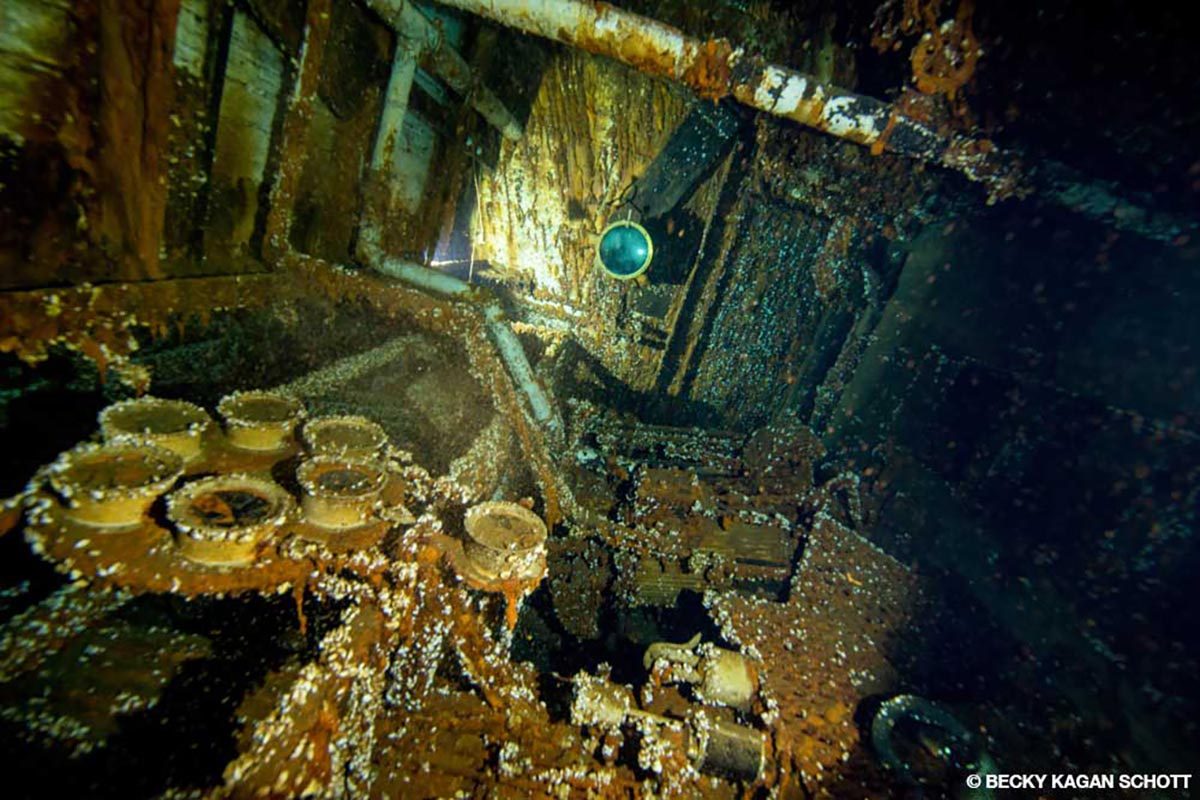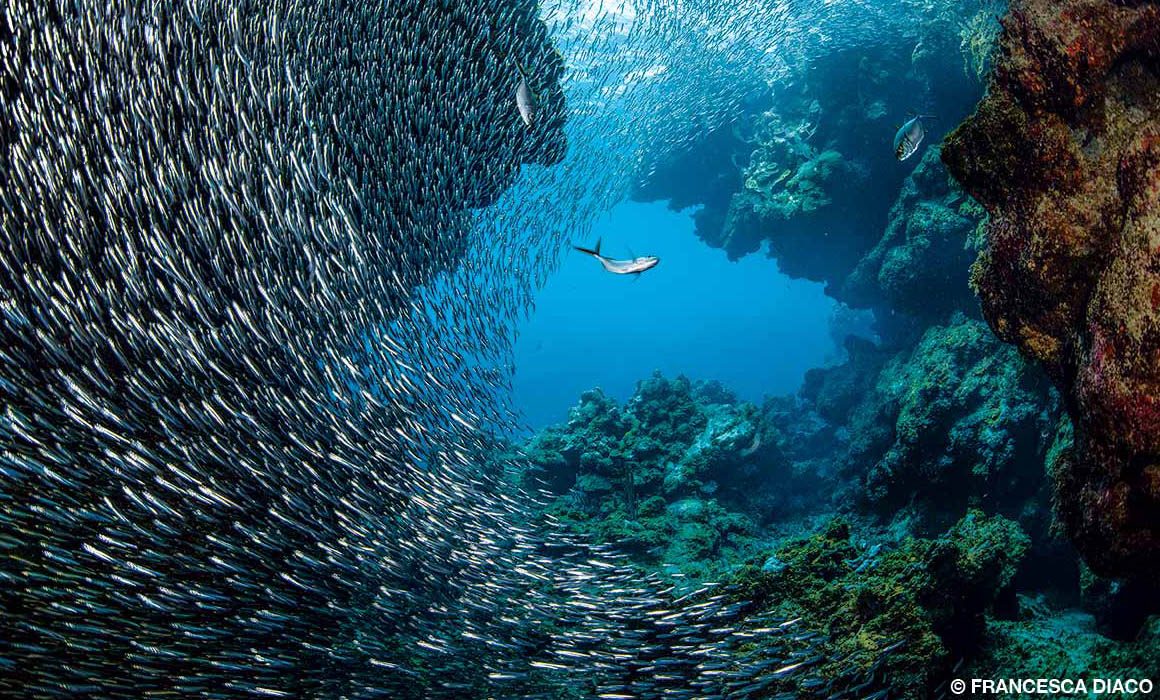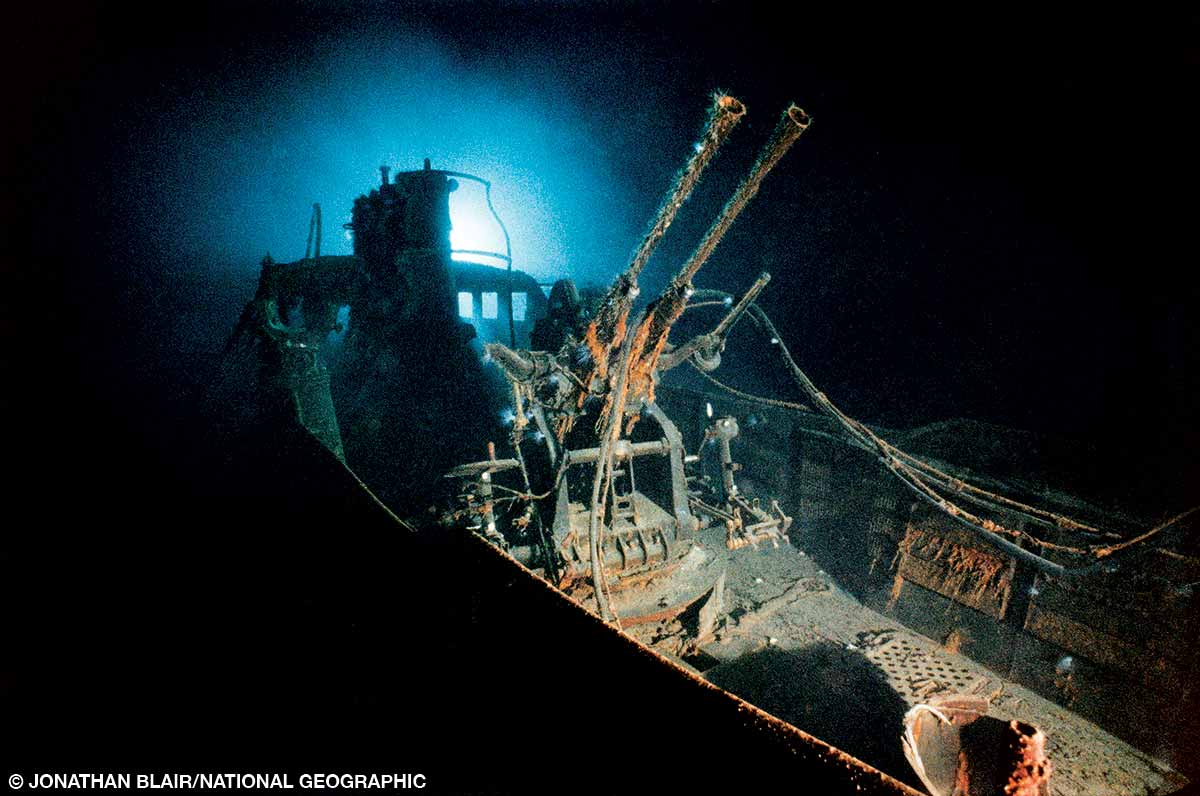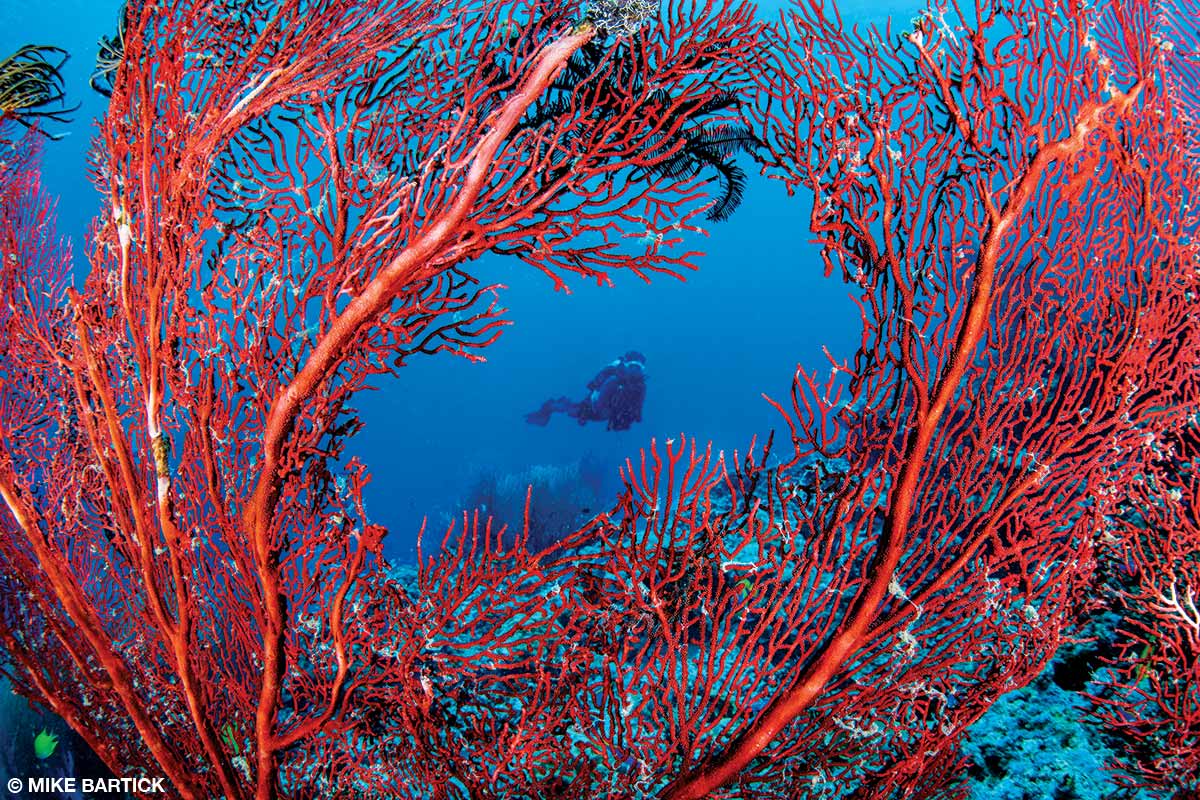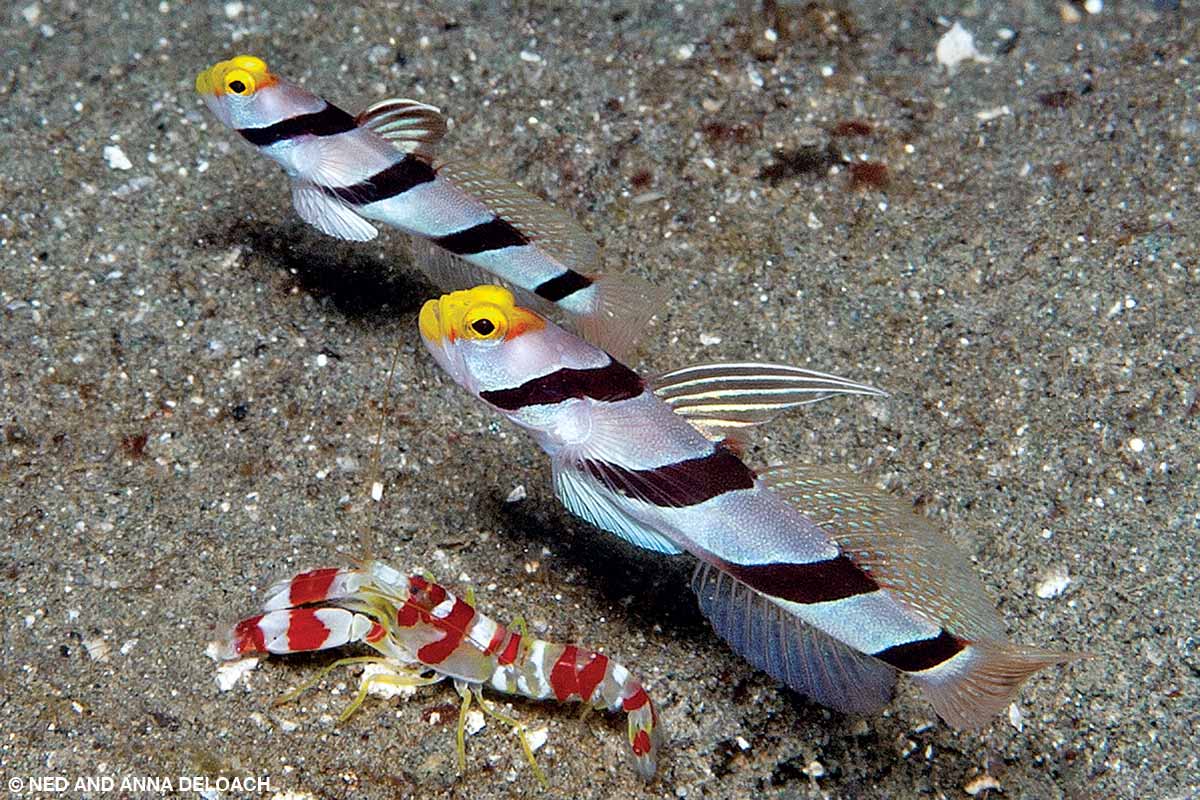If you like the idea of a liveaboard adventure with remote, open-ocean diving where your dive boat is likely the only one on the reef, you’ll love a trip to Flower Garden Banks. It remains one of the best-kept secrets for wilderness diving in the continental U.S., where you can expect rare encounters such as a longlure frogfish on a sponge, scalloped hammerhead sharks feeding or a whale shark swimming by.
Jesse Cancelmo provides a bonus photo gallery of images from Flower Garden Banks National Marine Sanctuary.
Francesca Diaco provides a bonus photo gallery of images from her island community of Roatán in the Bay Islands of Honduras.
Michael Aw, who has published several popular books of his photography, provides a bonus photo gallery of his images.
Becky Kagan Schott provides a photo gallery of images from the shipwreck destination of Thunder Bay National Marine Sanctuary in Lake Huron.
Located in the Bay Islands of Honduras, Roatán is a tropical gem nestled in the turquoise waters of the Caribbean Sea. The largest of the Bay Islands, Roatán sits about 30 miles off the Honduran coast between Utila and Guanaja. Its fringing reef system makes up the southernmost edge of the Mesoamerica Reef (the world’s second-largest reef system) and is arguably Roatán’s biggest attraction.
The story of the search for the Japanese submarine I-52 is one of two discoveries separated by time and purpose. In the dark of night in the Atlantic Ocean in 1944, U.S. Navy anti-submarine ships searched for a clandestine meeting between German and Japanese naval crews. Operating on captured intelligence, they sought to surprise and sink the two submarines. Half a century later, the I-52 still rested undiscovered on the seafloor, but this time the search was in the dark of the deep ocean in pursuit of possibility, not destruction.
Michael Aw’s early life while growing up in Singapore — he didn’t see the ocean until age 17 — gave few clues that he would one day become one of the most influential print journalists in destination diving and ocean conservation. The author of or major contributor to 43 books, Aw created Ocean Geographic magazine in 2007 and also leads expeditions, often to exotic regions. He now hopes to raise awareness of the folly of shark-finning and the overexploitation of our marine resources.
Turbid water can be a challenging environment for underwater photographers, particularly when shooting wide angle. Turbid water may not appear brown or green from the surface — in many cases the water looks entirely different once we drop in and begin the dive. All water is turbid to some degree. Understanding what causes turbidity and knowing how to work around it can make a world of difference when shooting in those conditions. One of the best skills a photographer can develop, particularly for shooting wide angle, is learning how to read water quality.
Interactions between different species, whether above or below water, typically revolve around confrontations between predators and prey. At the opposite and more harmonious end of the spectrum, a scattering of unrelated species coevolved to form lifelong alliances for their mutual security. These relatively rare go-along-to-get-along partnerships provide a net benefit for both parties, improving each species’ reproductive success. The close living arrangement between weak-eyed alpheid snapping shrimp and sharp-eyed partner gobies is a classic example of symbiosis in the sea.
